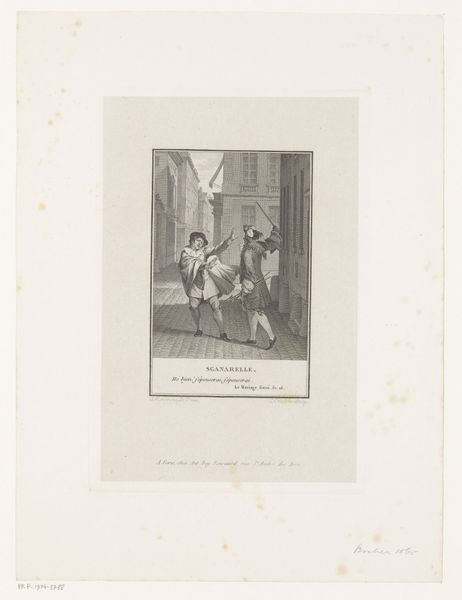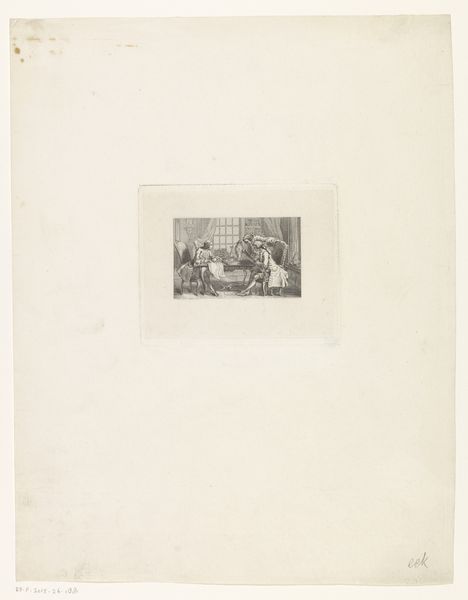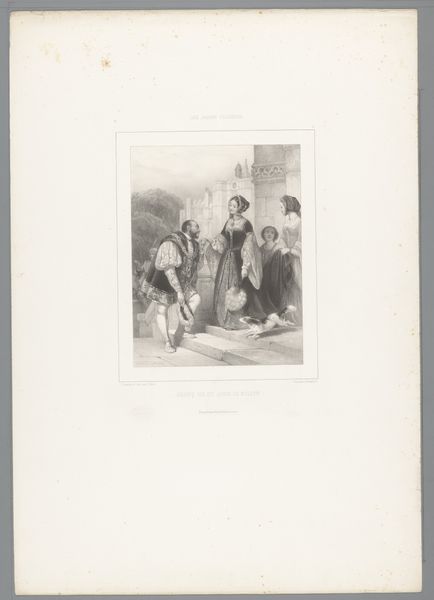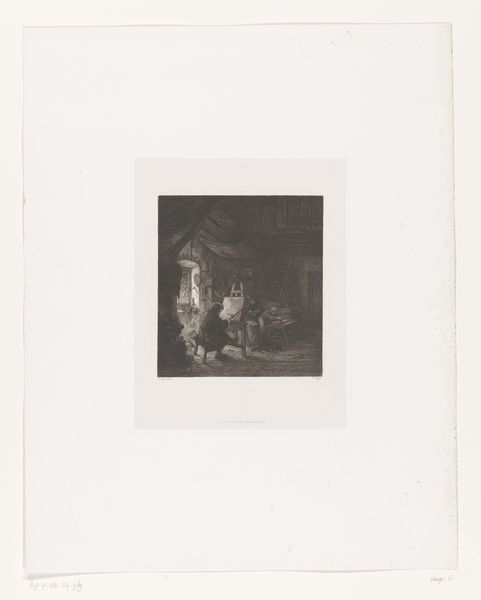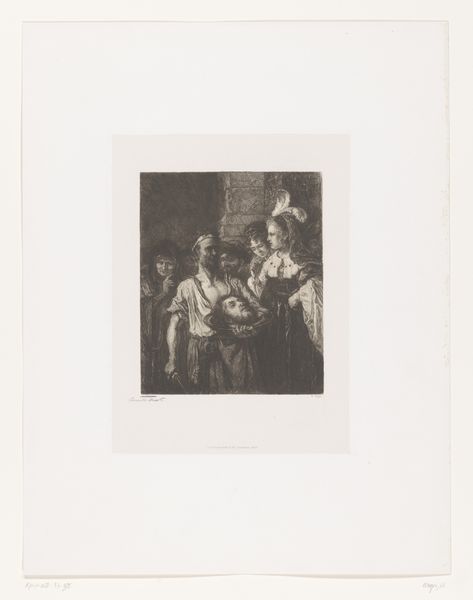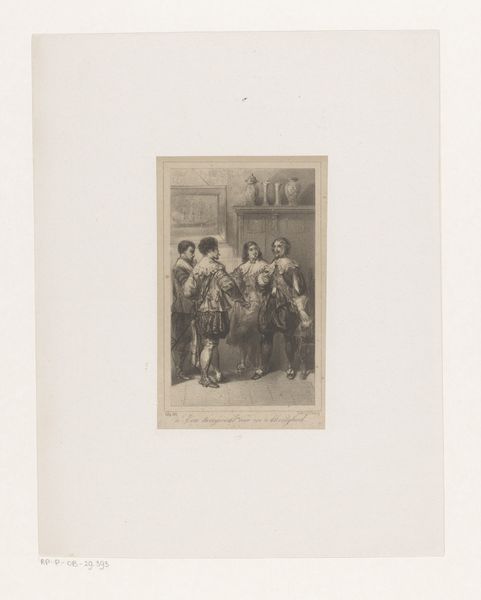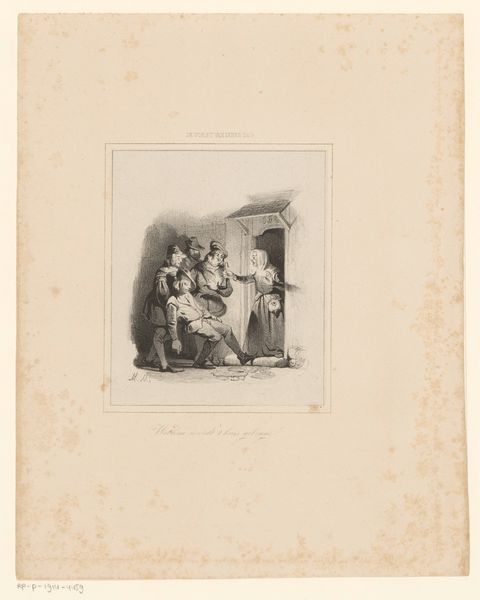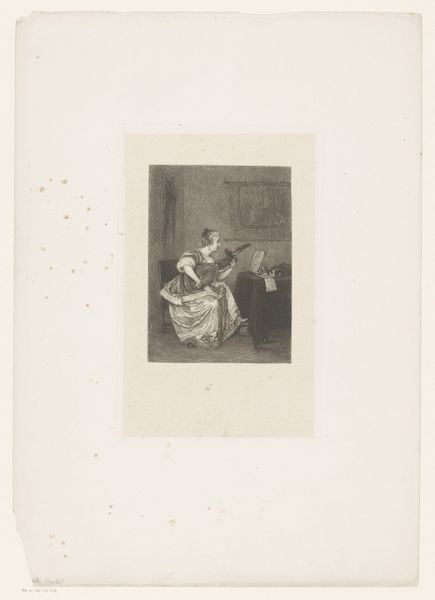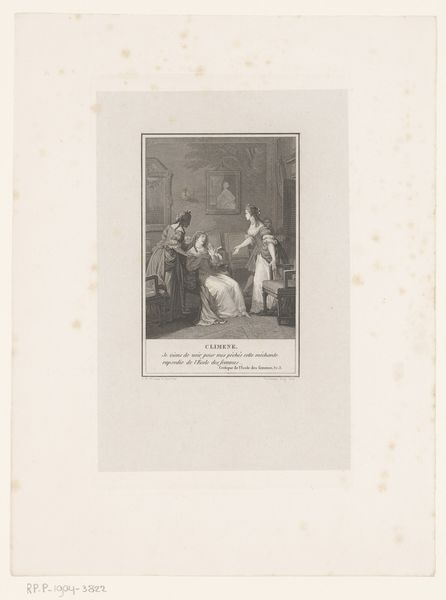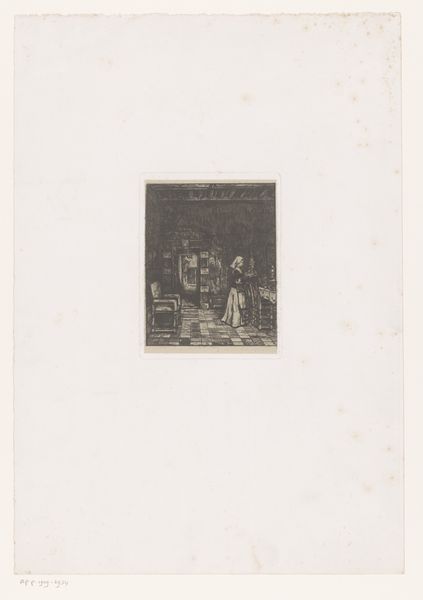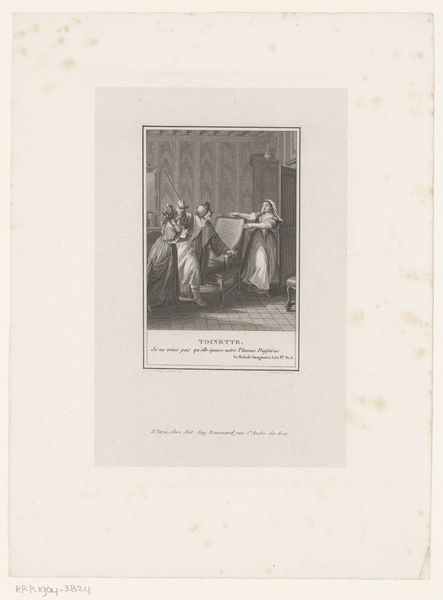
Eetkamerinterieur met edelman die een stoel aanbiedt aan een Romeins standbeeld, drie andere mannen kijken bang toe 1813
0:00
0:00
print, sculpture, engraving
#
portrait
#
neoclacissism
# print
#
figuration
#
sculpture
#
history-painting
#
engraving
Dimensions: height 212 mm, width 142 mm
Copyright: Rijks Museum: Open Domain
Curator: Well, isn't this a peculiar little scene! Before us, we have "Eetkamerinterieur met edelman die een stoel aanbiedt aan een Romeins standbeeld, drie andere mannen kijken bang toe", created in 1813 by Jean François Ribault. It's an engraving, depicting, as the title suggests, an interior scene with… quite the interaction unfolding. Editor: Right! My initial impression is pure theatrical tension. You've got this dramatic lighting, the classicism in the statue contrasted with the implied narrative unfolding with all these guys reacting. It feels like a play frozen mid-act, or maybe the kind of moment when someone tells a bad joke. Awkward, just really awkward. Curator: Absolutely. It is pulling on some potent strings of visual storytelling. Note the statue; Roman sculpture experienced a huge resurgence, of course, as a central feature within Neoclassicism. This noble offering the statue a seat could signify several things. Editor: Oh, definitely! I wonder about what that gesture of offering a chair truly means. Like, is it hubris? Or mockery? Is it like trying to relate to an unreachable ideal? It is also kind of funny, which I don't think should be discounted here. Curator: Good point. Laughter has always been the great disruptor of authority. And in the aftermath of the French Revolution, people's relationship with icons and idols, ancient or otherwise, became understandably complicated. To kneel, to bow, is this deference, or is something else in play? And those frightened expressions around the table... What fears or transgressions does the statue embody for them? Editor: Makes you wonder, doesn’t it? Especially that off-kilter balance of reverence and potential ridicule! Like, who decides what gets honored and how? How can an image alone elicit fear from those witnessing such an absurdity? I'm definitely seeing echoes of Don Quixote tilting at windmills in this bizarre image. Curator: I see that connection. And it really makes you think about how images accumulate meanings. Over time, icons shift depending on the culture perceiving them. This piece isn’t just about the classical past; it’s a snapshot of a very specific cultural moment, grappling with legacy and revolution. Editor: Definitely! Thanks for shining light on the undercurrents—it is really bizarre to see, yet also so telling of how cultural images get loaded up and re-imagined across eras. Curator: My pleasure.
Comments
No comments
Be the first to comment and join the conversation on the ultimate creative platform.

